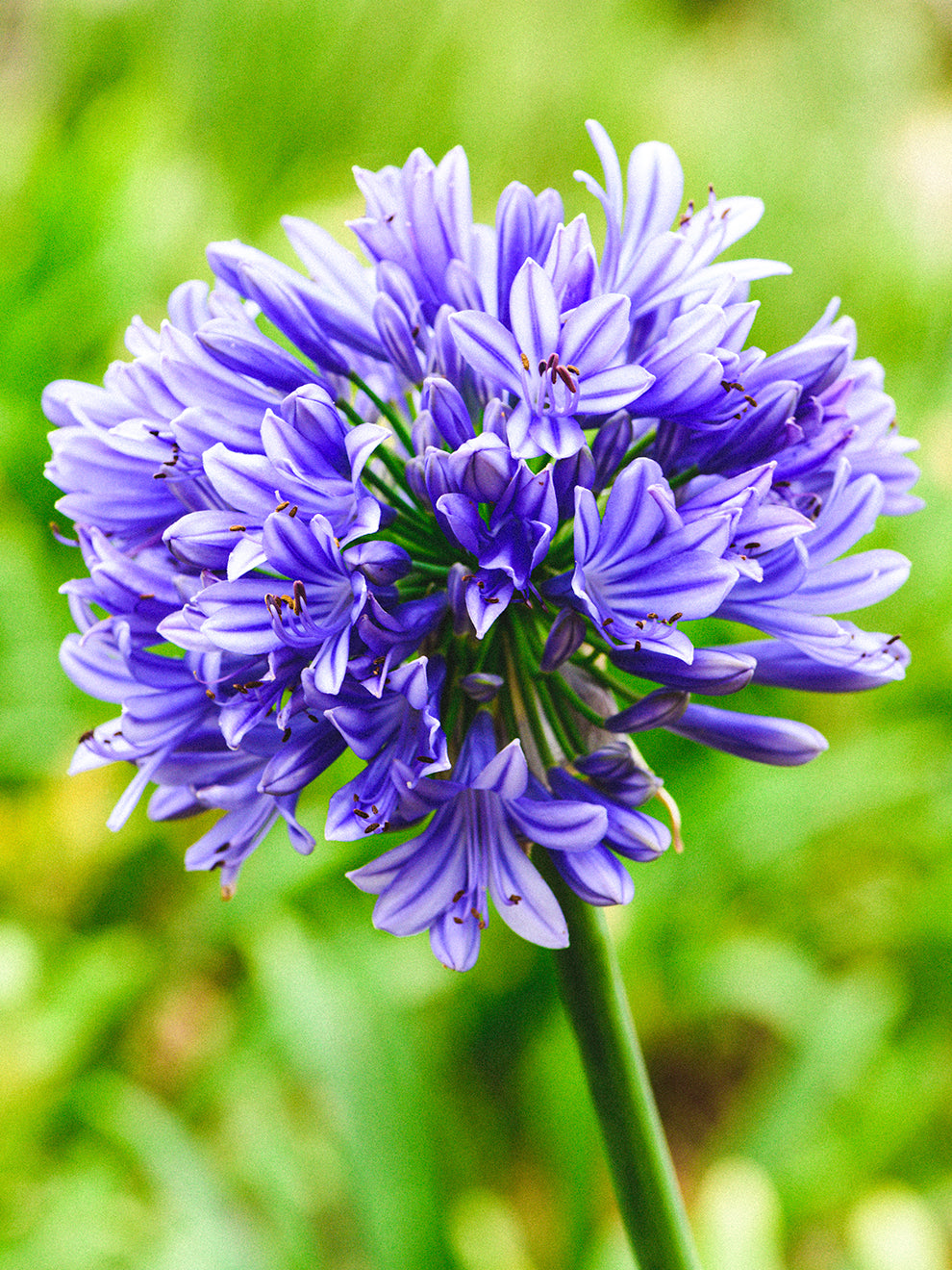Agapanthus Care Tips for Lush and Vibrant Flowers
Agapanthus Care Tips for Lush and Vibrant Flowers
Blog Article
Mastering the Art of Agapanthus Treatment: Crucial Steps for Healthy And Balanced Growth and Lively Flowers
In the world of horticulture, the growing of agapanthus stands as a rewarding endeavor for those who seek to support these elegant blooming plants. From picking the ideal selection to grasping pruning techniques, the trip towards cultivating thriving agapanthus plants is multifaceted and holds the key to opening the complete potential of these agricultural treasures.

Selecting the Right Agapanthus Selection

When picking the ideal Agapanthus selection for your garden, consider variables such as environment viability, bloom color, and development habit. Furthermore, take into consideration the climate in your area to make certain the Agapanthus selection you choose can flourish in your particular problems. Understanding the growth routine of different Agapanthus selections is critical for appropriate positioning within your garden.
Ideal Planting Conditions
Taking into consideration the optimum environmental requirements is essential for effective Agapanthus growing. Agapanthus plants are sensitive to cold temperatures and should be shielded from frost throughout winter season months.
To make sure healthy development and vibrant blossoms, plant Agapanthus light bulbs at a deepness of regarding 2-4 inches and space them 8-12 inches apart. Adding raw material, such as garden compost, to the dirt can enhance drain and fertility, promoting robust origin advancement. Mulching around the base of the plants aids retain wetness and reduces weed development. Routine watering is critical, particularly throughout the expanding season, to keep the soil regularly wet yet not waterlogged.
Watering and Fertilizing Tips
Maintaining appropriate moisture levels and providing important nutrients are essential components in the care regimen for Agapanthus plants. When it comes to sprinkling Agapanthus, it is essential to strike an equilibrium. These plants prefer consistently damp soil however are vulnerable to root rot if overwatered.
Feeding Agapanthus is crucial for advertising healthy and balanced growth and prolific blooms. Apply a balanced plant food, such as a 10-10-10 formula, in the early springtime as brand-new development emerges. By following these watering and fertilizing suggestions, you can ensure your Agapanthus plants thrive and create vivid, long-lasting flowers.
Trimming Methods for Agapanthus
Pruning Agapanthus plants at the suitable times and with appropriate techniques is vital for maintaining their wellness and basics advertising ideal growth and flowering. The suitable time to prune Agapanthus remains in late wintertime or very early spring prior to brand-new development arises. Begin by removing any kind of dead or yellowing fallen leaves near the base of the plant. Cut them as close to the ground as feasible without harming the arising shoots.
Deadheading spent flowers can likewise redirect the plant's power into producing more blossoms instead than establishing seeds. If you desire to gather seeds for proliferation, leave some blossoms to mature and dry on the plant.
Bear in mind to utilize tidy, sharp tools to make specific cuts and decrease the threat of presenting illness. Agapanthus. Regular pruning will certainly assist maintain your Agapanthus looking cool and healthy and balanced while making certain a bountiful display of stunning flowers
Taking Care Of Usual Pests and Conditions
After ensuring proper pruning techniques for Agapanthus, it is vital to attend to usual parasites and conditions that can influence the wellness and vitality of these plants. Agapanthus plants are generally sturdy but can still drop sufferer to specific concerns. One common parasite that influences Agapanthus is the Agapanthus gall midget. This small, orange fly lays its eggs in the vegetation, leading to distorted growth and blossom buds that fail to open up. To fight this bug, trim and ruin any type of affected plant components and think about utilizing insecticidal soap.
An additional common problem is fungal fallen leave area, which offers as dark lesions on the fallen leaves. To avoid fungal diseases, ensure great air flow around the plants, stay clear of overhanging watering, and get rid of any type of contaminated leaves without delay. Additionally, Agapanthus plants can experience origin rot if they are grown in improperly draining pipes soil. To prevent this, plant Agapanthus in well-draining soil and stay clear of overwatering. By being vigilant and taking prompt activity against pests and conditions, you can aid your Agapanthus plants prosper and produce dynamic blossoms.

Final Thought
Finally, mastering the art of agapanthus treatment involves picking the right variety, offering optimal growing conditions, review proper watering and feeding, proper pruning strategies, and resolving common bugs and diseases. By following these important actions, you can make sure healthy development and vivid blooms for your agapanthus plants. Keep in mind to on a regular basis keep track of and keep your plants to advertise their overall health and longevity.
To make sure healthy and balanced growth and dynamic blossoms, plant Agapanthus light bulbs at a depth of about 2-4 inches and area them 8-12 inches apart. By following these watering and feeding suggestions, you can ensure your Agapanthus plants prosper and generate vivid, durable blooms.
One usual parasite that influences Agapanthus is the Agapanthus gall midget. In addition, Agapanthus plants can suffer from origin rot if they are grown in Learn More Here improperly draining dirt. By following these necessary steps, you can make sure healthy and balanced growth and vibrant blossoms for your agapanthus plants.
Report this page